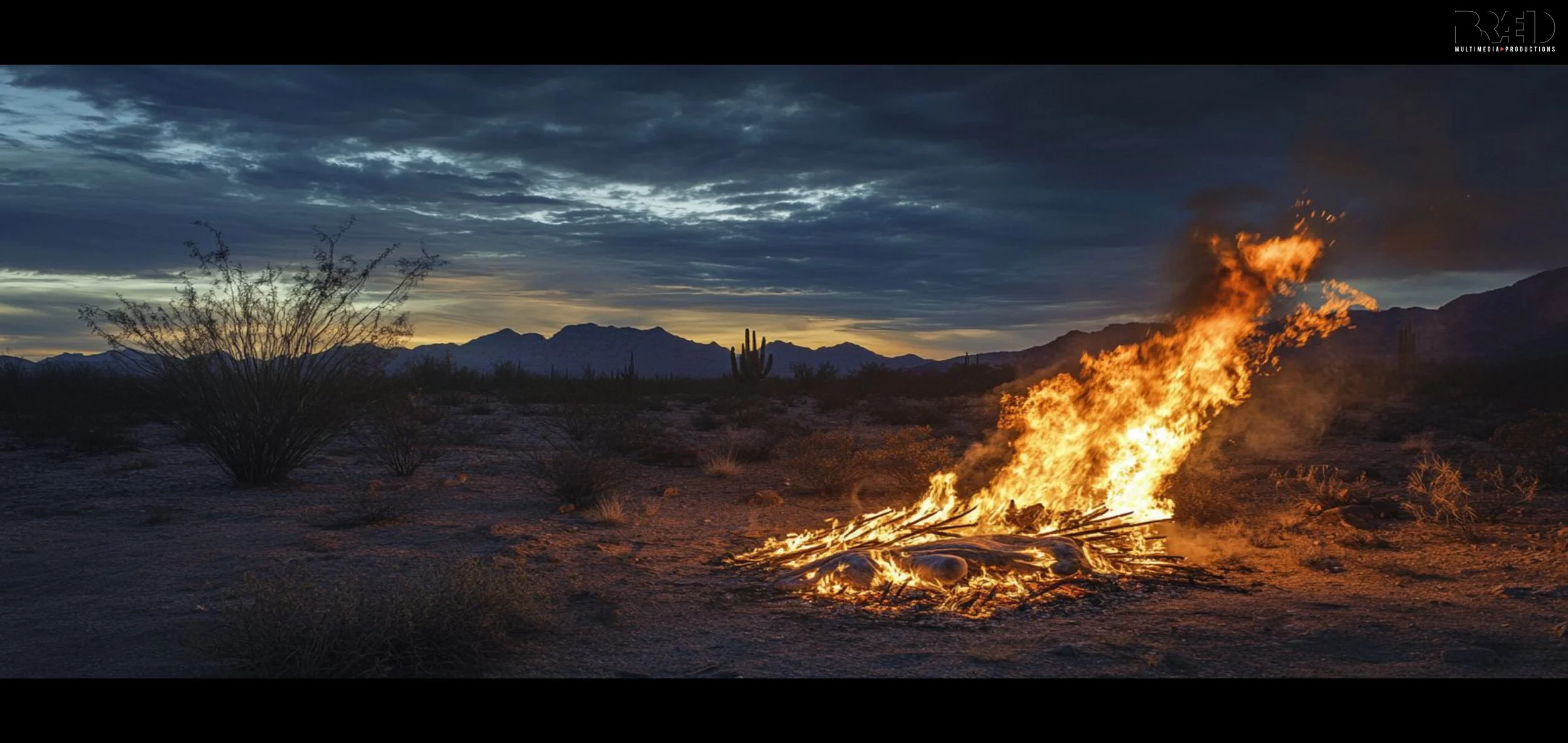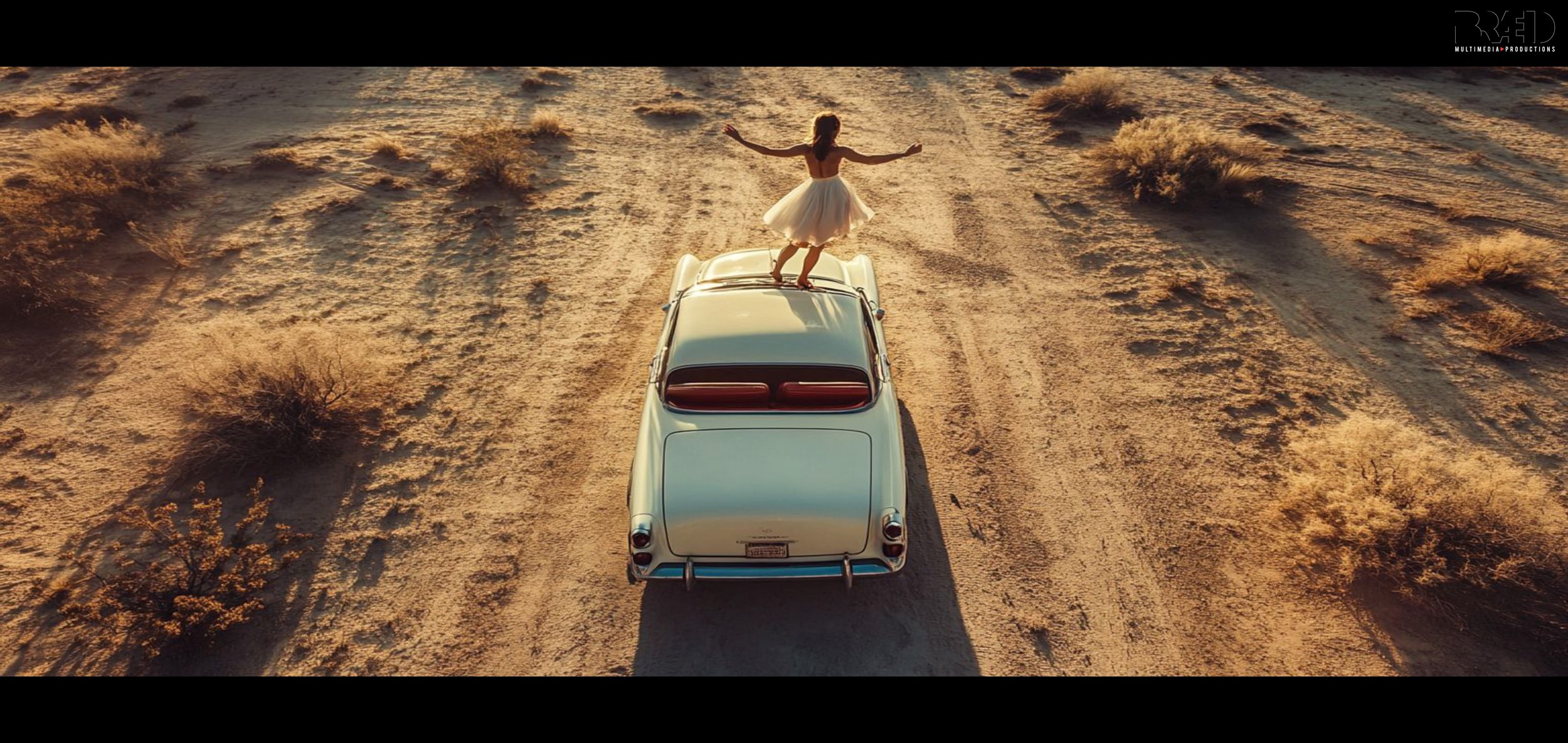Every compelling music video begins with careful planning. For Into the Outside Box's haunting single, "Where I Died," the process of bringing a gripping narrative to life involved deep artistic exploration, unexpected turns, and cutting-edge innovations. Here's an inside look at the meticulous planning, creative pivots, and technological leaps that went into crafting this emotionally charged visual experience.
Phase 1: Conceptualizing the Vision
The journey began when we received the haunting single "Where I Died." To fully grasp the emotional core of the piece, we immersed ourselves in repeated listens, uncovering deeper nuances with each play. Collaborating closely with the artist, we crystallized a narrative that matched the song's intensity: the harrowing story of a young starlet kidnapped and held captive by a grotesque and greasy oligarch. This concept set the stage for a visual narrative blending symbolic metaphors with striking performances to capture the unsettling yet powerful essence of the song.
a note on Music Video Concept Frameworks
When conceptualizing music videos, various frameworks can guide the storytelling—ranging from performance-focused videos showcasing musicianship, to narrative videos emphasizing a clear storyline, and even experimental approaches exploring abstract visuals and symbolic interpretations. To explore these frameworks further and see more examples, check out our detailed breakdown: 10 Music Video Concept Frameworks
Phase 2: Location Scouting—Preparedness Meets Serendipity
One of the crucial elements of narrative-driven music videos is the choice of location, which significantly influences visual storytelling and symbolism. Initially, we envisioned a grim, dingy hotel setting but quickly realized logistical constraints required adaptation. Flexibility was key, leading us to pivot toward a dusty, stone dungeon atmosphere that reinforced the oppressive nature of our storyline.
Remarkably, serendipity struck when a casual conversation in a sauna with a new acquaintance revealed not only access to a striking vintage vehicle needed for pivotal scenes but also a breathtaking desert property perfect for our bonfire witch-burning sequence. This experience reinforced a valuable lesson: meticulous preparation often attracts unexpected opportunities.
Phase 3: AV Scripting—Mapping Lyrics to Visuals
With the narrative finalized and locations secured, we turned our attention to crafting a detailed Audio-Visual (AV) script. This script meticulously mapped lyrical elements to visual storytelling cues, emphasizing symbolism, emotional impact, and narrative continuity. The AV scripting phase is essential for aligning the entire production team on a shared vision, ensuring every shot and moment enhances the song's narrative and emotional depth.
Phase 4: AI-Driven Storyboarding
Once confident in our script, we utilized generative AI tools—specifically Midjourney—to translate the creative visuals from our AV script into precise storyboard frames. This new approach allowed us to create detailed storyboard frames swiftly and effectively, incorporating complex visual symbolism and emotional tone into our pre-production process.
The generative AI-enabled storyboard process has become an exciting innovation for BRAEID Multimedia, providing clients with an accurate visualization of the project’s aesthetic and narrative direction before shooting even begins.





























Final Thoughts
From deep listening to inspired location scouting and cutting-edge AI-powered storyboarding, each phase of creating "Where I Died" exemplified BRAEID Multimedia’s dedication to storytelling excellence. The resulting music video is a testament to what can happen when creative vision, detailed planning, and technological innovation come together.
To see how this process unfolded visually, watch "Where I Died" by Into the Outside Box.












